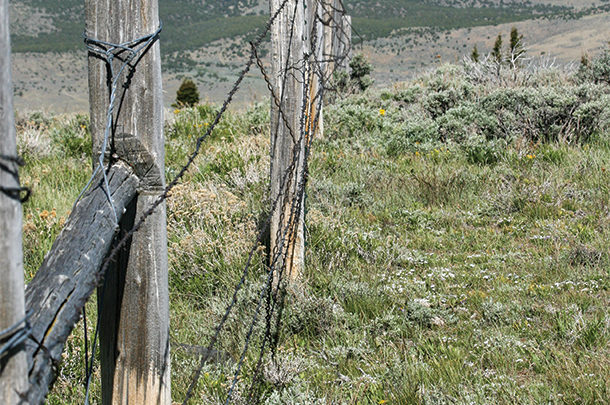Old barbed wire hanging off a weather-beaten post is an iconic image of rural America. It’s also a dangerous environment for both animals and people.Animals can become entangled and suffer cuts that may lead to an infection. Cattle could ingest a piece of wire causing hardware disease – a serious issue in their intestines and stomach. People risk getting scrapes and cuts that lead to tetanus.
Van Medley, technical support manager at Bekaert Fencing, has seen it firsthand as a cattle producer and full-time fencing expert. “We saw a horse that got damaged fence wrapped around its hoof,” Medley says. “Still rideable, but it injured the tendons in its lower leg and made the horse lame.”
Proactive fence maintenance and proper disposal of old barbed wire are vital. Medley shares ways you can do both to keep animals and humans safe.
When to do fence maintenance
Producers and horse owners should check their barbed wire fences multiple times a year.
“I ride my fenceline every time I move cattle,” Medley says. “So, two to three times a year for general maintenance. Then if a storm moves through, I’ll do a ride through after to see if there was any damage to the fence.”
There are a couple important things to look for when checking your fence.
“Watch your braces and connections at posts,” Medley says. “If you start getting slack in your lines or broken/damaged sections of fence, you need to do maintenance or replacement, depending on the age of the fence. Also, check for posts starting to rot or damage in the wire.”
If a repair needs to be made, Medley recommends investing in a quality pair of wire joiners. “They can splice wire back together really quick, and you don’t have to worry about getting cut or scratched. Plus, they’re a long-lasting fix.”
Dispose of old fencing materials
When old fencing materials are ready to be disposed of, Medley encourages people to take their old wire to their local scrapyard.
“We haul it to a metal yard where they can cut it up and melt it down,” Medley says. “It’s the best option. In a landfill, the wire is going to last a long time and could pose ongoing risks.”
Medley discourages two disposal methods: piling it up and burying it. “I know some people pile it up with the intention of hauling it off later,” Medley says. “But it’s one of those things that, if you wait, do you get back to it?”
Other risks of leaving untended wire are potential harm to curious kids and equipment damage. “If you get it tangled in a cutter or in a tractor, it can be a real problem,” Medley says. “That will cost you quite a bit of money if it gets entangled in equipment and busts a gear box.”
Hiring fence removal
For some, disposing of old barbed wire just falls too far down on the list of priorities on a busy farm or ranch. Others work an eight-to-five job, or they inherited the land and aren’t able to attend to the fencing right away. Luckily, this is a job you can hire out.
“If you’re limited on time, you can get contractors to come in and take out the old fence,” Medley says. “The great thing about doing that is they often have equipment and they can level up the ground once the fence is removed. A general handyman can come in and do this as well.”
Another option is to put up new fencing and take the old out later.
“If you are constrained on time, you can go ahead and build a new fence over a couple feet from the old,” Medley says. “It can be challenging to put the new fence up working around the old, but then you can take the old fence out at a later date. Turn it into a two-weekend job. Just make sure your braces are still in great condition, as braces are the backbone of your fence project.”








